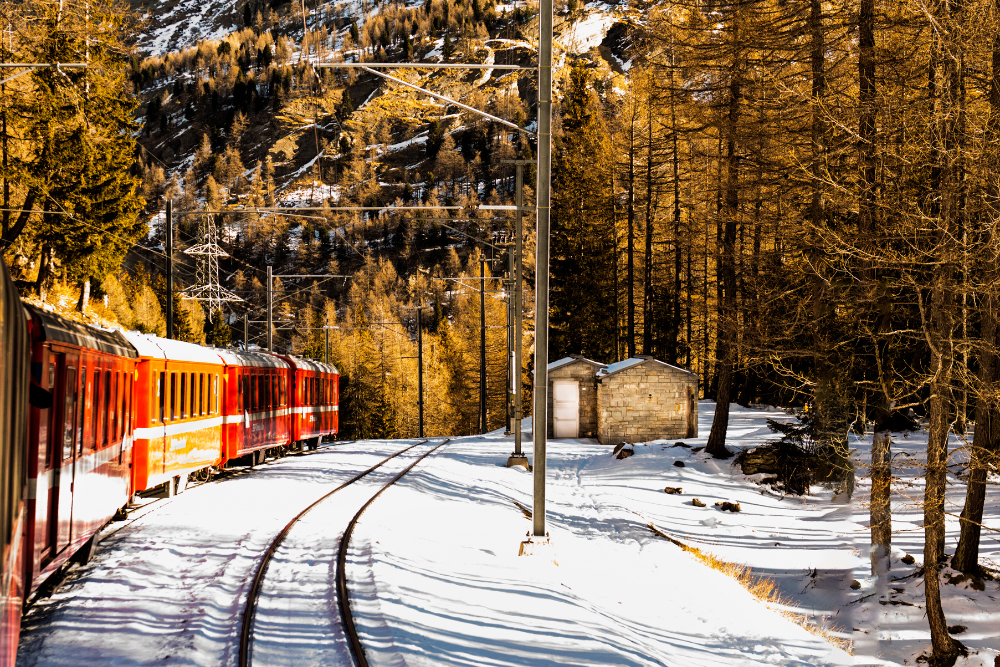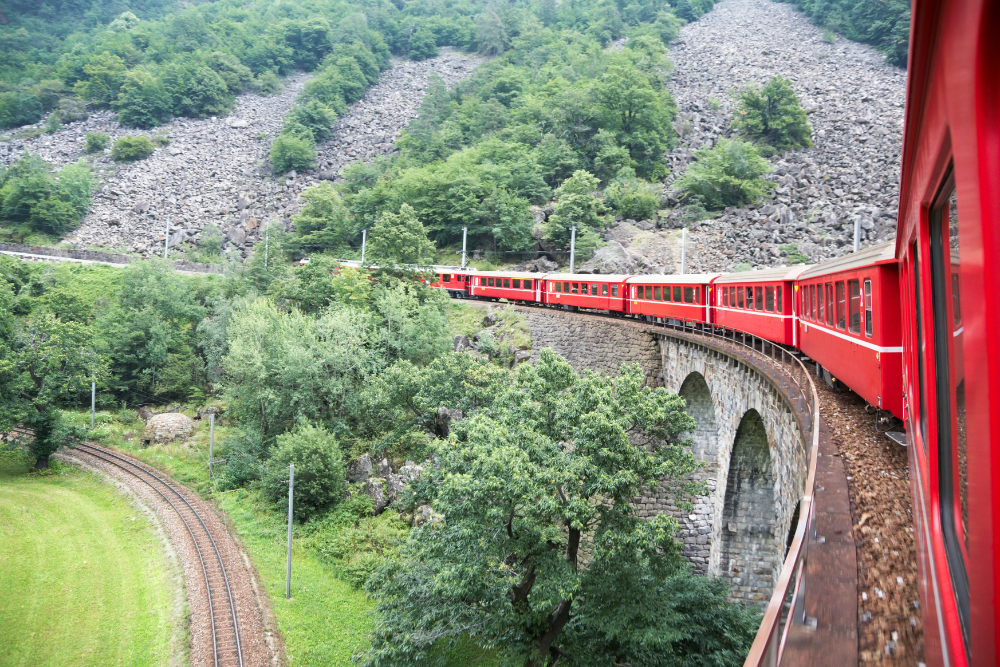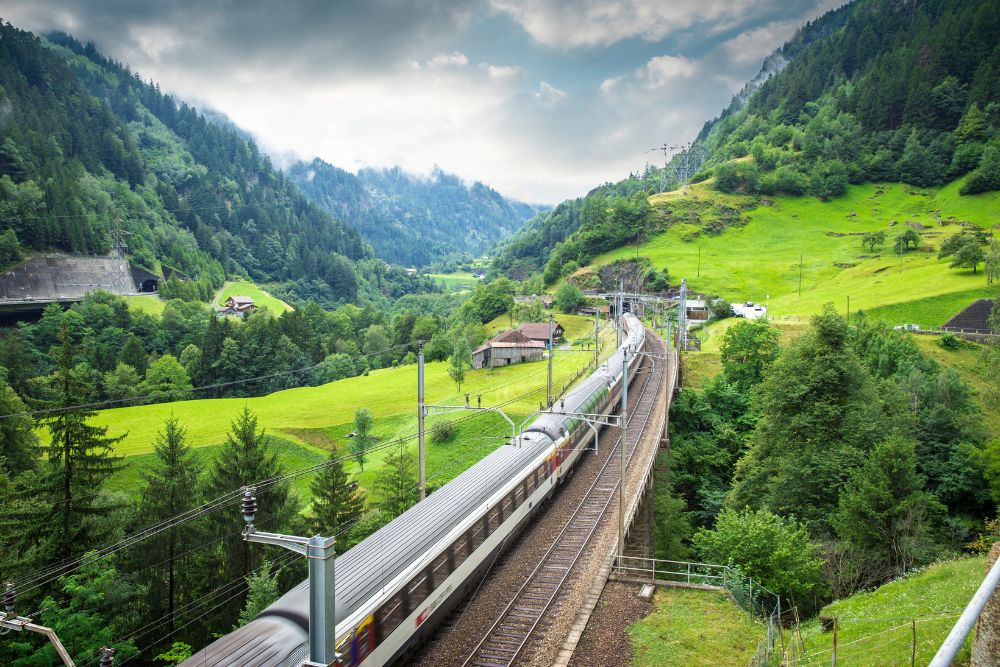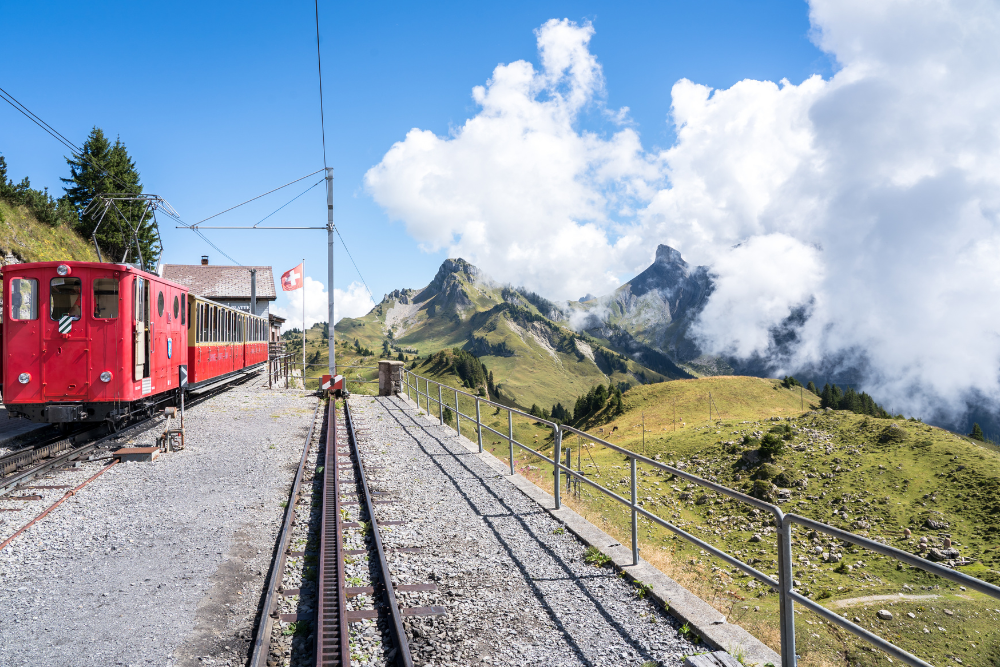Switzerland is home to some of the most scenic and historically significant railways in the world. These railways not only provide a glimpse into the country’s rich history of transport and engineering but also offer travelers the chance to experience Switzerland’s breathtaking landscapes in a unique way. From the Alpine passes to the valleys, these historical railways are an essential part of the Swiss travel experience, showcasing the country’s commitment to innovation and preservation of heritage. Here’s a guide to some of Switzerland’s most iconic and historical railways.
1. The Glacier Express

The Glacier Express is one of the most famous and scenic train journeys in Switzerland, and it holds a special place in Swiss rail history. Connecting the towns of Zermatt and St. Moritz, the Glacier Express takes passengers on an unforgettable 8-hour journey through the Swiss Alps, offering panoramic views of snow-capped peaks, deep valleys, and picturesque villages.
- History: The Glacier Express was first introduced in 1930, designed to offer a luxurious and comfortable way to travel through the Swiss mountains. It was a pioneering service, originally conceived as a way to connect the major Swiss resorts of Zermatt and St. Moritz without the need to change trains.
- Route Highlights: The Glacier Express travels through the Oberalp Pass at 2,033 meters (6,670 feet) above sea level, the Rhone Glacier, and the Landwasser Viaduct, one of the most famous railway bridges in Switzerland. The journey is marked by an incredible mix of Swiss nature, with ever-changing landscapes, ranging from Alpine meadows to alpine forests.
- Why It’s Historical: This iconic railway has been running for decades, and it’s renowned for its world-class service and engineering. The Glacier Express is an enduring symbol of Swiss engineering prowess, representing the intersection of tradition and modernity.
2. The Bernina Express

The Bernina Express is another historical railway that offers travelers an unforgettable ride through the Swiss Alps. This journey links Chur (Switzerland) with Tirano (Italy), passing through some of the highest points in the Swiss Alps.
- History: The Bernina Express, inaugurated in 1910, is one of the oldest and most unique mountain railways in the region. It was originally built to connect the Swiss Engadine region with the Italian Lombardy region, creating a direct route through the Alps.
- Route Highlights: The Bernina Express passes through the Bernina Range, traveling across the Bernina Pass at 2,253 meters (7,391 feet) above sea level. It also offers views of the Morteratsch Glacier, one of the largest glaciers in the Alps, and crosses the Landwasser Viaduct, one of the most impressive and photographed railway bridges in the world.
- Why It’s Historical: The Bernina Express is unique because it is a part of the UNESCO World Heritage-listed RhB (Rhaetian Railway), and it’s one of the highest-altitude railway routes in Europe. The train travels through landscapes that are practically inaccessible by road, making it a testament to Switzerland’s early feats of engineering.
3. The Gotthard Railway

The Gotthard Railway is an integral part of Swiss railway history, playing a crucial role in linking the northern and southern parts of Switzerland for over a century. It connects Zurich with Lugano, passing through the historic Gotthard Base Tunnel, the world’s longest railway and deepest tunnel.
- History: The Gotthard Railway was completed in 1882 and revolutionized transport across Switzerland. The construction of the Gotthard Base Tunnel in 2016 marked the completion of the most advanced tunnel in the world, and its 57-kilometer (35-mile) length allows trains to pass beneath the Alps without going over the mountainous terrain.
- Route Highlights: The historical Gotthard route travels through the Gotthard Pass, one of the most famous Alpine passes, and offers stunning views of the surrounding mountain landscapes. Passengers can admire the picturesque lakes, valleys, and villages along the way, particularly between Zurich and Lugano.
- Why It’s Historical: The Gotthard Railway is critical to understanding the development of Switzerland’s transport system. The original Gotthard railway was a feat of engineering, and the newer Gotthard Base Tunnel continues this tradition. The railway’s opening in 1882 marked the beginning of Switzerland’s modernization of transportation, bridging the linguistic and cultural divide between the north and south.
4. The Furka Cogwheel Railway

The Furka Cogwheel Railway offers a historical and scenic journey through the Swiss Alps, running between the towns of Oberwald and Realp in the canton of Uri. The railway is particularly known for its steep gradients and classic mountain scenery.
- History: Opened in 1926, the Furka Railway was initially used to connect the valley towns of the Uri region. The railway’s unique feature is its use of cogwheels that allow the train to tackle steep inclines that would be impossible for traditional railways.
- Route Highlights: This narrow-gauge railway runs across the Furka Pass, offering passengers stunning views of the Rhine Gorge and the Monte Rosa Massif. During the journey, travelers will also pass near the Rhine Glacier, one of the primary sources of the Rhine River.
- Why It’s Historical: The Furka Cogwheel Railway is one of the few cogwheel lines still operating today, and it has been preserved as part of Swiss cultural heritage. It is a living relic of early 20th-century rail engineering and provides a glimpse into how Swiss railways were built to overcome the challenges of the country’s mountainous terrain.
5. The Rhaetian Railway (RhB) and the Albula/Bernina Line

The Rhaetian Railway (RhB) operates several historically significant routes, including the Albula Line and the Bernina Line, which together form a UNESCO World Heritage site due to their cultural and engineering significance.
- History: The Rhaetian Railway was established in the late 19th century to connect the Alps with the surrounding valleys. The Albula and Bernina lines were inaugurated in the early 1900s and are notable for their innovative engineering solutions, such as bridges, viaducts, and tunnels, that allow the railways to navigate the steep Alpine terrain.
- Route Highlights: The Albula Line connects the towns of Thusis and St. Moritz, while the Bernina Line runs from Tirano (Italy) to Chur (Switzerland). These routes pass through dramatic mountain scenery, including the Landwasser Viaduct, Cavagli Viaduct, and Bernina Pass, which are engineering marvels in their own right.
- Why It’s Historical: Both lines are UNESCO World Heritage-listed, and they stand as a testament to Swiss rail engineering. Their inclusion on the UNESCO list highlights the importance of the Rhaetian Railway as part of Switzerland’s cultural and transportation heritage. The RhB network continues to be a major tourist attraction and remains a vital part of the Swiss railway system.
Conclusion
Switzerland’s historical railways offer not only an incredible journey through time but also provide an unforgettable way to experience the country’s stunning landscapes. From the panoramic views of the Glacier Express and Bernina Express to the engineering marvels of the Gotthard Railway and Furka Cogwheel Railway, these trains give you a unique opportunity to connect with Switzerland’s rich railway heritage. Whether you’re a history enthusiast, a nature lover, or just a passionate traveler, a ride on one of Switzerland’s historical railways is an experience you won’t forget.












